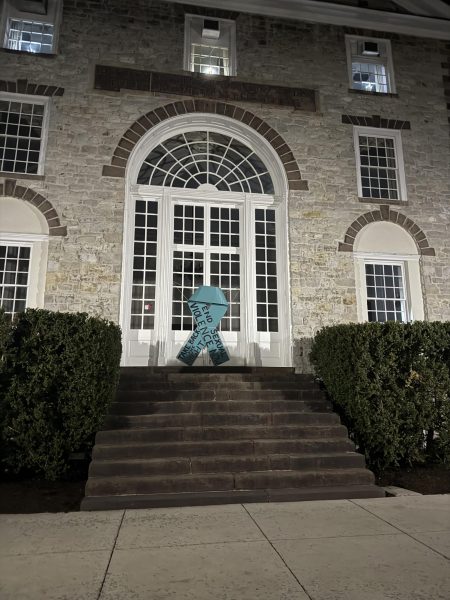Speaker Discusses History of Mental Illness in China
Guest lecturer Emily Baum outlined changing definitions of mental illness in China, from strictly “homicidal tendencies” to “truancy, adultery…or even nonconformity” in a recent lecture at Dickinson.
Baum delivered her lecture “Madness Restrained and Unrestricted: Police, Families, and the Beijing Municipal Asylum” on Monday, Nov. 13 in the Stern Center Great Room. The presentation was given as this year’s Donald W. Flaherty Lecture, an annual lecture for scholars addressing Asian-related issues.
Baum split her lecture into three parts, each addressing a different aspect of the issue in the pre-to-early 20th century. The first of these, beginning in the 1644-1911 Qing Dynasty, saw a perception of mental illness marked by violent acts. Families were legally expected to confine and watch over members considered to have madness, though many ignored the law and allowed their mad relatives to live openly in society. However, from 1901-1911, new policies moved the responsibility of caring for mad individuals from the family to a state-run asylum in Beijing. This took place alongside the development of the first Chinese police force, who staffed the institution.
Allyson Yangea ’21 was interested by Baum’s explanation of the shift from family care to asylum placement. “It was a topic that I had never really heard about or learned about before and I thought it was interesting to learn about what they did before they opened the first mental asylum, how [it was] the responsibility of the families to take care of the mentally ill,” Yanega said. “Once they opened the asylum, the definition [of mental illness] broadened, and people tried to use it to their own advantage.”
Baum focused on the new roles of police and families in the second and third parts of the presentation, respectively. She noted that “the police who managed [the asylum] were pretty good at keeping records” about the facility, and incorporated these notes into her research. The written accounts showed that police conflated other problems with madness in their interactions, and families used accusations of insanity in domestic disputes. These circumstances led to a broader perception of what was considered madness.
The social implications of this change stood out to Trang Nguyen ’21. “I think how the police [associated] crazy people with people who are dangerous to the society is quite interesting,” said Nguyen. “And how they [associated] insanity and madness with poorness and people who are in a lower status in the society.”
Sean Volz ’21 noted Baum’s clarity in speaking during the lecture. “I think Emily Baum presented a very clear and straightforward narrative of the struggles that China faced in addressing mental health in the early 20th century,” Volz said.
For Yachen Jiao ’18, Baum’s focus on the role of families was reminiscent of other trends in Chinese history. “…the families got to determine if their family members are mentally ill and had a lot of control of whether they should be treated or not,” Jiao said. “It reminds me of the foot unbinding movement for women when family members also played an important role, especially parents [who] were responsible for guiding their children during the movement.”
Baum is an assistant professor at the University of California, Irving, and a scholar of modern Chinese history. Her forthcoming book, The Invention of Madness: State, Society, and the Beijing Insane, 1900-1937 addresses the evolution of the definition of madness in China between the turn of the 20th century and the 2nd Sino-Japanese War.





